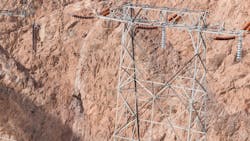BIG WIRES Act Introduced To Address Shortfall of Transmission Capacity In U.S. Electricity System
U.S. Senator John Hickenlooper (D-Colorado) and Representative Scott Peters (D-California) last week introduced the Building Integrated Grids With Inter-Regional Energy Supply (BIG WIRES) Act, legislation to update and streamline the country’s patchwork energy transmission system.
“If we want to maintain our national security amidst growing international conflict, make our power system more reliable, and cut high energy costs for Americans, we can’t have a faulty, outdated electric grid,” said Hickenlooper. “Our bill advances two priorities simultaneously: make electricity more affordable and build a power grid fit for the 21st century.”
“During a heatwave, hurricane, or other natural disaster, the last thing you want is for the power to go out. It can be the difference between life and death,” said Peters. “There is no reason neighboring electrical grids should not have the capacity to share power during these situations to avoid blackouts. The associated buildout of electric transmission lines would greatly improve reliability and keep costs down for consumers. BIG WIRES will help get clean, reliable energy from where it is produced to where it is used by people, but above all else, it is an American energy security and independence bill.”
In an age of energy innovation, the United States’ electrical grid still can’t move large amounts of energy from one part of the country to another. Meanwhile, new energy projects are stuck paying expensive fees to connect numerous, smaller transmission lines to the existing grid, like building new highways to crisscross the U.S every time we want to connect two towns. This haphazard buildout has led to lower reliability and higher costs for consumers.
Hickenlooper and Peters’ legislation, which will be formally submitted Monday, proposes a fix to this issue by directing the Federal Energy Regulatory Commission (FERC) to better coordinate construction of an interregional transmission system. Specifically, the bill would require each of the FERC transmission planning regions to be able to transfer 30% of their peak electrical loads to neighboring regions, working to close current gaps in the nation’s transmission network: instead of building new highways, building new exit ramps off the existing interstate.
The BIG WIRES Act would:
- Improve Electrical Grid Reliability: Establishing minimum-transfer requirements would enable greater interregional power flows, which is key to electrical grid resilience against extreme weather events like Winter Storms Uri and Elliott.
- Reduce Energy Costs: Upgraded transfer capabilities would dramatically lower energy costs for American families, both by allowing regions where power prices are cheap to sell to regions where it is more expensive, and by allowing all regions to connect new, low-cost resources to the grid.
- Be Tech-Neutral: All types of generation – fossil, renewable, and nuclear – need transmission to connect to the grid. Relieving grid congestion gets energy where it is needed, more efficiently.
- Prioritize Regional Flexibility: In meeting the minimum-transfer requirements outlined in the bill, FERC regions decide how they will upgrade their systems.
Notably, this bill would cost the government no money, according to Hickenlooper's statement. Instead, utilities and transmission developers within each of the transmission planning regions would be responsible for upgrading the grid. Because interregional transmission makes the grid more efficient, in the same way that interstates make our road systems more efficient, money spent on new lines would be more than offset by savings on numerous smaller projects.
The BIG WIRES Act garnered national attention in May when it was proposed as a possible component to a debt ceiling compromise.
Full text of the bill is available HERE.
